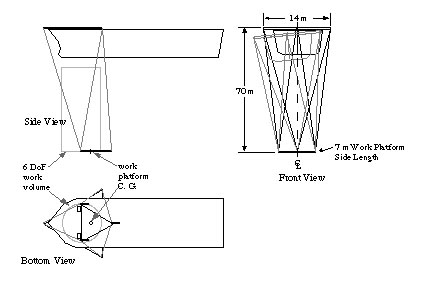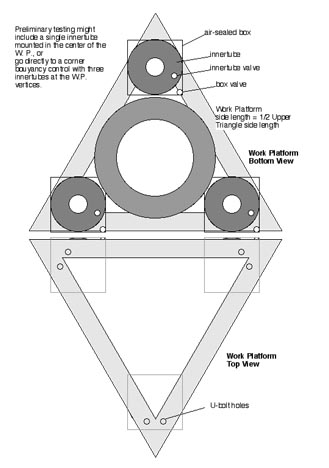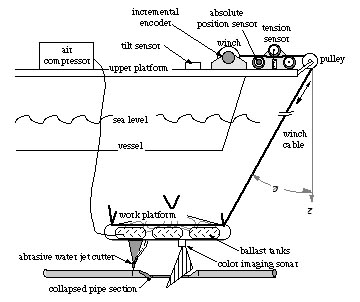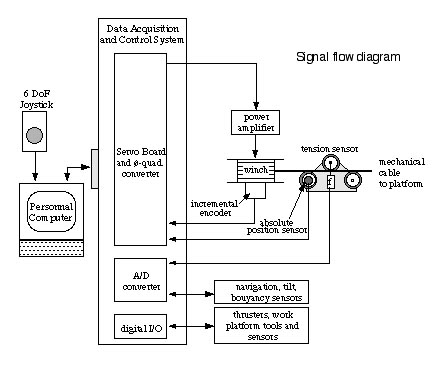Undersea Configurations 3
Return to Undersea Configurations Page
Ship-Supported RoboCrane System Graphics
c  d
d 
e  f
f 
This system (c) is shown with one possible system size (7 m platform, 14 m upper triangle-winch separation). It can be deployed as shown with the winches on-board one or more ships and used to control a suspended platform in six degrees-of-freedom. With a buoyant platform and tension controlled cables, the platform can compensate for motions caused by the ship above. Therefore, winches will pay cable in and out dependent upon increased or decreased tensions in the cables above a specific threshold. Platform buoyancy can also be controlled to provide increased cable tensions without adding platform weight. This can be used to provide increased platform constraint against sea currents or other environmental perturbations. A simple platform design is shown in (d). This design can provide a quick method to deploy the buoyant platform. A segmented platform with embedded water/air mixture is also possible.
The system can be mounted to a ship or other system (e.g., an oil rig) to work in shallow water relative to the winch separation length. With the platform brought close to the ship, it can also be used to provide tool control or a personnel carrier to the submerged ship bottom. Salvage, pipe or cable repair (e), and many other applications are possible with this system since it is simple to control with on-platform cameras or other tools and equipment.
The controller for this system is shown in a high-level diagram in (f). The system includes a PC-based (or other) controller and a data acquisition and control system with the various I/O boards installed. A tension sensor is attached to each cable for tension feedback to the controller. Also, position (absolute and incremental) are desired. Navigation, tilt, and buoyancy sensors can also be attached to the controller to provide additional platform control aspects. For example, ship navigation sensors can be used to provide platform position with respect to the earth in unknown territories. Thrusters, work platform tools/sensors can also be connected to the system and provide additional control. Thrusters, for example, can be attached to the platform and provide additional horizontal, or rotational force during tool control.

